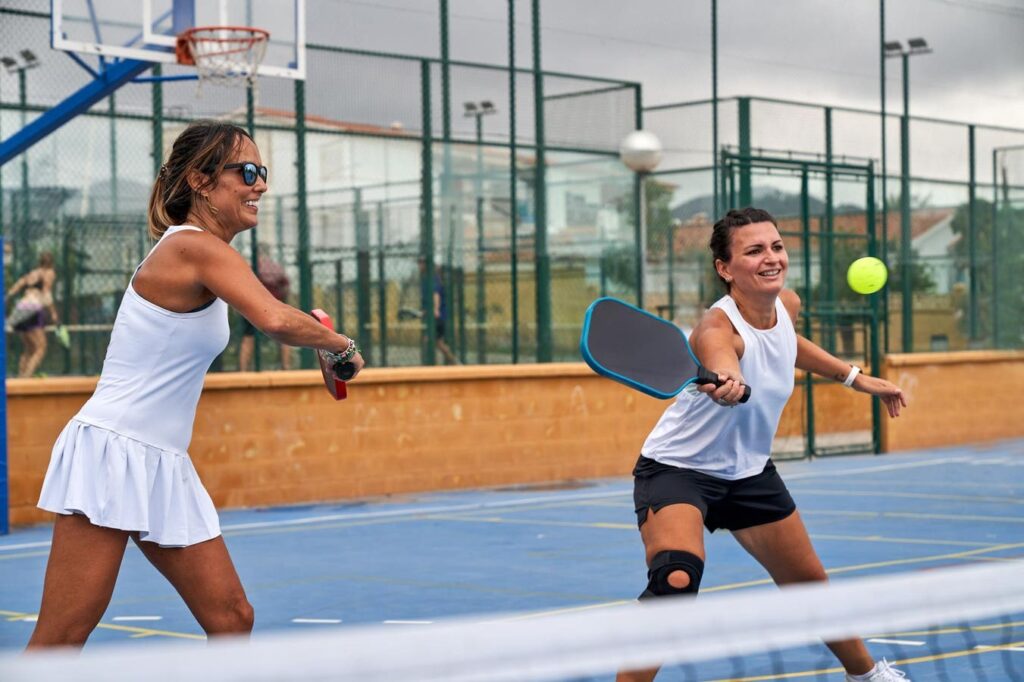Scott Miller, Founder & CEO of PICKLETILE™, created PICKLEGLASS™ Soundproof Systems, an innovative sports design solution.
Pickleball’s meteoric rise in popularity has brought with it an unexpected side effect: noise. The distinctive “pop” of the paddle connecting with the ball, once a charming hallmark of the sport’s accessibility, has become a source of contention in many neighborhoods. For commercial court developers and owners, addressing this issue has grown increasingly important.
The Growing Need For Noise Mitigation
As pickleball extends beyond private clubs into public parks and residential areas, noise complaints are escalating. Communities face pressure to maintain welcoming recreational spaces while respecting neighbors who value quiet surroundings.
In response, a variety of sound control strategies tailored for pickleball are emerging, each offering a different balance of noise reduction, aesthetics and community acceptance. Let’s take a look at how developers and court owners can proactively address pickleball noise to not only foster positive community relationships but also safeguard their reputations and long-term success by preventing costly disputes, legal challenges or loss of court access due to unresolved complaints.
Soundproofing Strategies To Consider
• Quieter Equipment
Quieter paddles and low-noise balls offer a simple, cost-effective solution to address pickleball noise at its source. I’ve found that this approach works well in facilities with cooperative players or private clubs where rules are more easily enforced. However, enforcement on public courts can be challenging, as not all players may adhere to equipment guidelines. Additionally, some pickleball enthusiasts argue that these adjustments affect the bounce and gameplay, leading to an inauthentic experience.
One way to address this is to provide incentives for using quieter equipment, such as offering them on-site or including them in rental programs. You can also combine this strategy with structural noise-reduction solutions for a more comprehensive approach.
• Acoustic Fencing, Vegetation Buffers And Sound Blankets
Traditional remedies like acoustic fencing, dense vegetation buffers and outdoor soundproofing blankets offer several advantages. These solutions are generally cost-effective and easy to install, and can provide immediate noise reduction. Vegetation buffers, in particular, can enhance the aesthetic appeal of courts and create a natural sound barrier that aligns with community preferences for green spaces.
However, these approaches can face challenges, including limited effectiveness in mitigating the sharp, high-frequency impact noises of pickleball and having potential durability issues in extreme weather. Reduced visibility can also result in unsightly views and pose security concerns. When implementing one or more of these measures, it’s important to do regular proper maintenance to improve durability and extend their lifespan and visual appeal.
• Advanced Soundproof Glass Systems
In my experience working in this sector, advanced systems like engineered glass partitions can significantly reduce decibel levels while preserving the game’s dynamics and minimizing disruption to surrounding areas. These systems also maintain clear sightlines for spectators, which helps facilitate an engaging viewing experience.
However, common challenges include higher upfront costs and the need for precise installation. To mitigate these concerns, first evaluate your potential long-term cost savings, such as minimizing noise complaints and legal risks, and consider collaborating with experienced professionals for proper installation. It’s also important to ensure the system you choose has been properly graded to meet local regulatory standards for noise, safety and architecture.
Steps To Determine The Right Solution For You
1. Assess budget. Consider both initial investment and long-term savings. Balancing upfront costs with the potential for reduced complaints, legal fees or lost revenue can help justify higher expenditures.
2. Evaluate court design and space constraints. Identify how each solution fits within the specific layout of your court. For example, tall sound partitions may be impractical in confined areas, and vegetation buffers should have enough space for healthy growth.
3. Understand community needs. Engage with stakeholders to gauge their concerns and preferences. Collaborative planning can help you prioritize solutions that balance functionality with community acceptance.
4. Consult experts. When in doubt, consider working with acoustic engineers and court designers to explore options that will meet your noise mitigation goals while adhering to local regulations and enhancing the user experience.
By considering these factors, you can choose a noise-control strategy that aligns with your unique requirements and fosters long-term community harmony.
A Holistic Approach
As pickleball grows, I believe noise mitigation has become key to blending innovation, community well-being and the sport’s appeal. No single solution can eliminate noise entirely, but investing in sound-dampening measures can help you enhance your amenities while addressing resident concerns.
A balanced approach should foster positive relationships among players, operators and the community. By integrating environmental design, acoustical engineering and thoughtful planning, your courts can become valued community assets rather than points of contention.
Forbes Business Council is the foremost growth and networking organization for business owners and leaders. Do I qualify?
Read the full article here











